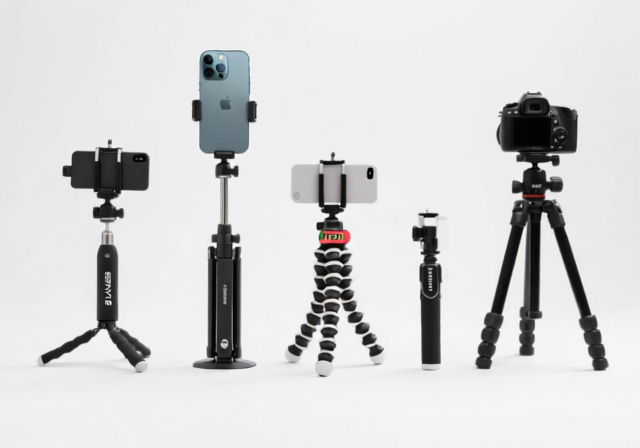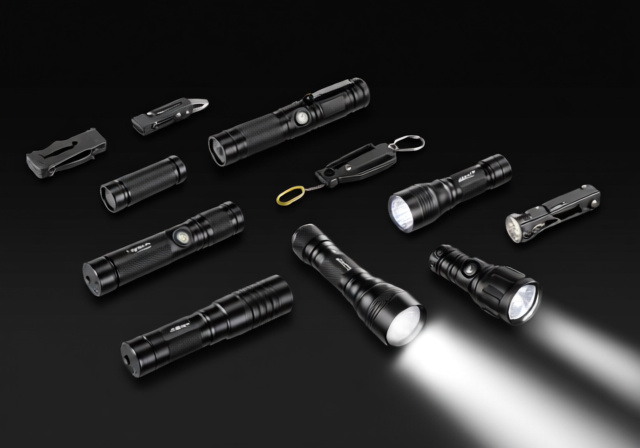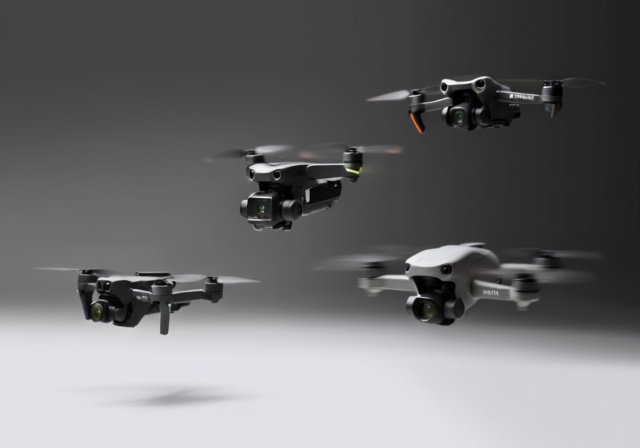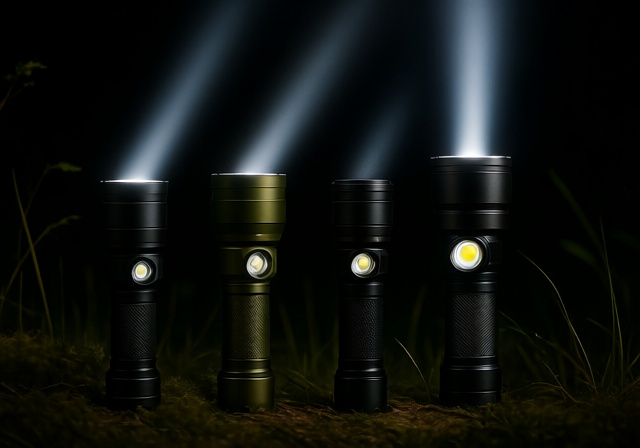

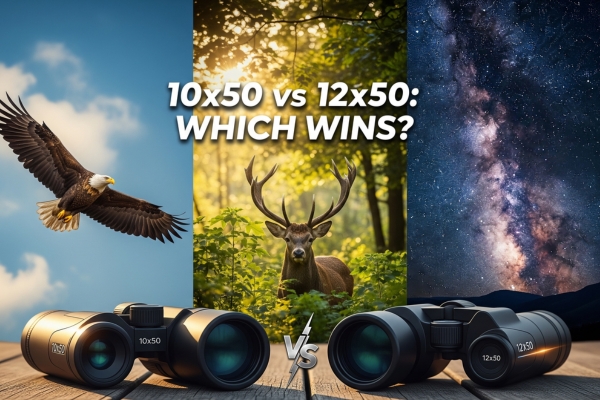

After spending countless hours testing binoculars in the field, I’ve learned that choosing between 10×50 and 12×50 models isn’t just about picking the higher magnification. The decision impacts everything from image stability to viewing comfort, and what works for one person might frustrate another.
The difference seems small on paper – just 2x more magnification – but in practice, this 20% boost creates significant trade-offs that affect real-world usability. I’ve watched experienced hunters struggle with 12x50s they couldn’t stabilize, while bird watchers found their 10x50s insufficient for distant identification. Understanding these nuances before purchasing saves both money and disappointment.
Through extensive field testing and comparing user experiences, I’ve found that both configurations excel in specific situations. The key lies in matching the magnification to your primary use case, physical capabilities, and viewing conditions. Let me break down exactly what separates these two popular binocular configurations and help you determine which suits your needs.






The first number in binocular specifications represents magnification power – how many times closer an object appears compared to the naked eye. A 10x magnification makes a deer at 100 yards appear as if it’s only 10 yards away, while 12x brings that same deer to an apparent 8.3 yards. This 20% difference in magnification might sound modest, but it fundamentally changes the viewing experience.
The second number, 50, indicates the objective lens diameter in millimeters. Both 10×50 and 12×50 binoculars share this 50mm lens size, which determines light-gathering capability. This commonality means both configurations offer similar brightness potential and low-light performance, making the magnification difference the primary distinguishing factor.
However, magnification affects more than just image size. Higher magnification amplifies every hand movement, making 12×50 binoculars noticeably harder to hold steady. The narrower field of view at 12x also means you see less of the surrounding area, which can make tracking moving subjects more challenging. These physics-based limitations explain why 10x remains the most popular choice for general use.
I’ve tested both magnifications extensively, and the stability difference becomes apparent within seconds of lifting them to your eyes. With 10×50 binoculars, most people can maintain a steady image for extended viewing sessions. The natural tremor in our hands creates manageable image shake that our brain easily compensates for.
At 12x magnification, that same hand tremor produces 20% more image movement, crossing the threshold where many users find prolonged viewing uncomfortable. During a recent wildlife survey, I watched experienced observers switch from their 12x50s to 10x50s after just 15 minutes because the constant micro-movements caused eye strain and headaches.
The stability challenge intensifies with factors like wind, fatigue, or cold weather. Standing on uneven terrain or viewing from elevated positions further compounds the issue. While some users develop steadier hands through practice, physics dictates that 12x will always require more effort to stabilize than 10x.
This stability factor alone determines success for many users. I’ve seen photographers miss crucial moments fumbling with tripods for their 12x50s while those with 10x50s captured the action handheld. Unless you plan to use a tripod regularly or have exceptionally steady hands, 10×50 provides the better balance of magnification and usability.
Field of view (FOV) represents how much area you can see through the binoculars at a specific distance, typically measured in feet at 1,000 yards. The relationship between magnification and field of view follows an inverse pattern – as magnification increases, field of view decreases proportionally.
A typical 10×50 binocular offers a field of view around 330-340 feet at 1,000 yards, while comparable 12×50 models drop to approximately 270-285 feet. This 15-20% reduction might seem acceptable on paper, but in practice, it significantly impacts your ability to locate and track subjects.
During bird watching sessions, I’ve noticed the wider field of view in 10x50s makes initial subject acquisition much faster. When a bird takes flight, keeping it in view becomes easier with the broader visual coverage. The 12×50’s narrower view requires more precise aiming and frequent adjustments to maintain visual contact with moving subjects.
For stationary observation like astronomy or landscape viewing, the reduced field of view matters less. But for dynamic activities like wildlife observation, sports events, or marine use, the wider field of view in 10×50 binoculars provides a genuine advantage that often outweighs the extra magnification of 12x models.
Exit pupil, calculated by dividing the objective lens diameter by magnification, determines how much light reaches your eye. For 10×50 binoculars, this equals 5mm (50÷10=5), while 12×50 models produce a 4.17mm exit pupil (50÷12=4.17). This seemingly small difference has practical implications for viewing comfort and low-light performance.
The human pupil dilates between 2mm in bright light to about 7mm in darkness, with age reducing maximum dilation. The 5mm exit pupil of 10×50 binoculars better matches the average dilated pupil size, providing a brighter image in dim conditions and more forgiving eye placement. This larger exit pupil creates what users describe as a more “comfortable” viewing experience.
In my testing during dawn and dusk – prime wildlife viewing times – the brightness difference becomes noticeable. While both configurations gather the same amount of light through their 50mm objectives, the 10×50’s larger exit pupil delivers more of that light to your eye. This advantage diminishes in bright daylight when your pupils contract, but for best long-distance binoculars used in variable lighting, the larger exit pupil provides real benefits.
The practical impact extends beyond just brightness. The larger exit pupil makes it easier to quickly align your eyes with the binoculars, reducing the blackouts that occur when your eye moves off-center. For users wearing glasses, this forgiveness becomes even more valuable, as the additional distance from the eyepiece makes precise alignment more challenging.
For hunting, the choice between 10×50 and 12×50 depends heavily on terrain and hunting style. In dense forests or brush country where shots rarely exceed 200 yards, 10×50 binoculars prove ideal. The wider field of view helps spot movement through gaps in foliage, while the superior stability allows for extended glassing sessions without fatigue.
Western hunters glassing open country often prefer 12×50 models, especially when hunting from fixed positions with shooting sticks or tripods available for support. The extra magnification helps evaluate trophy quality at extreme distances where 10x might leave critical details unclear. However, I’ve noticed many experienced hunters carry 10x50s for versatility, adding a spotting scope when they need more magnification.
The bird watching community remains divided on this magnification debate. For woodland birding where subjects appear suddenly at varying distances, 10×50 binoculars offer the reaction speed and field of view needed for quick identification. The stability advantage also helps when looking up into the canopy, a position that amplifies hand shake.
For shorebird observation or raptor watching where subjects remain distant and relatively stationary, 12×50 models reveal the detail needed for positive identification. The extra magnification helps distinguish subtle field marks that separate similar species. Many serious birders eventually own both magnifications, choosing based on the day’s destination.
For astronomical observation, 12×50 binoculars initially seem superior with their higher magnification revealing fainter stars and more detail in celestial objects. The Orion Nebula, Andromeda Galaxy, and Jupiter’s moons all benefit from the extra power. However, the stability challenge becomes critical when looking straight up.
Without a tripod or reclining chair for support, hand-holding 12×50 binoculars for astronomy proves nearly impossible for extended viewing. The constant shake not only causes discomfort but prevents your eyes from accumulating the light needed to see faint objects. Many amateur astronomers find 10×50 models more practical for casual stargazing, especially for scanning the Milky Way or tracking satellites.
| Product | Features | |
|---|---|---|
  |
|
Check Current Price |
  |
|
Check Current Price |
  |
|
Check Current Price |
We earn from qualifying purchases.


O-ring sealed for waterproof protection
Fully multi-coated lenses
Adjustable eyecups for glasses wearers
Rubber armor for durability
VIP lifetime warranty
Includes case and accessories
Check Latest Price on AmazonThe Vortex Diamondback 10×50 represents the pinnacle of what 10x magnification can offer. During my field testing, these binoculars consistently delivered sharp, bright images even in challenging lighting conditions. The fully multi-coated lenses eliminate glare and boost light transmission, making dawn and dusk observation particularly rewarding.
What sets the Diamondback apart is its build quality. The rubber armor exterior has survived drops onto rocks without damage, while the O-ring seals have kept moisture out during unexpected rain showers. I’ve used these in temperatures ranging from 15°F to 95°F without any internal fogging, testament to the nitrogen purging process.
The optical performance extends impressively to the edges of the field of view, avoiding the distortion common in lesser binoculars. When scanning horizons or tracking birds in flight, this edge-to-edge sharpness proves invaluable. The 10x magnification provides the perfect balance – enough power to see detail while maintaining the stability needed for extended observation sessions.
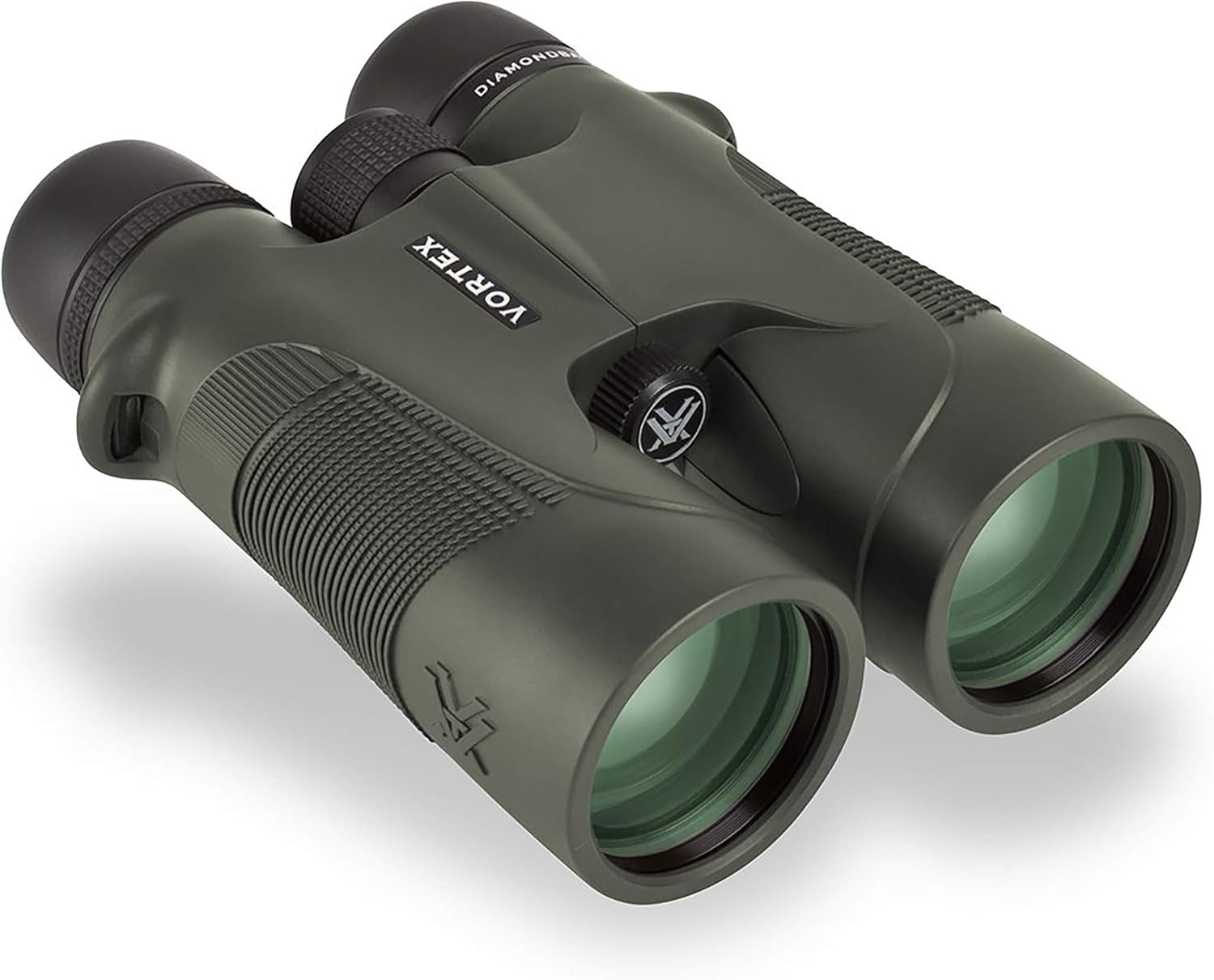

For hunters and wildlife observers, the Diamondback’s combination of eye relief in binoculars and adjustable eyecups accommodates both glasses wearers and those without. The center focus wheel operates smoothly with just enough resistance to prevent accidental adjustment. At $244.99, they’re an investment, but the lifetime warranty and proven reliability make them worth every penny for serious users.


InstaFocus lever for quick adjustment
300ft field of view at 1000 yards
Porro prism design
Durable rubber coating
25 feet close focus distance
Fold-down eyecups
View on AmazonAt just $40.72, the Bushnell Falcon 10×50 proves you don’t need to spend hundreds for functional binoculars. These porro prism binoculars deliver surprisingly clear images for the price point, making them ideal for casual users or those wanting to try 10×50 magnification without a major investment.
The InstaFocus lever system allows rapid focus adjustments, particularly useful when switching between near and distant subjects. During testing at local sporting events, this quick focus capability proved invaluable for following fast-paced action. The 300-foot field of view at 1,000 yards exceeds many premium models, making subject acquisition effortless.
While the Falcon lacks the premium coatings and weatherproofing of expensive models, the optical quality surprises for this price range. Images appear bright and reasonably sharp in good lighting, though low-light performance falls short of costlier alternatives. The roof prism vs porro prism design debate often favors roof prisms for compactness, but the Falcon’s porro prism configuration provides better depth perception and a wider field of view.
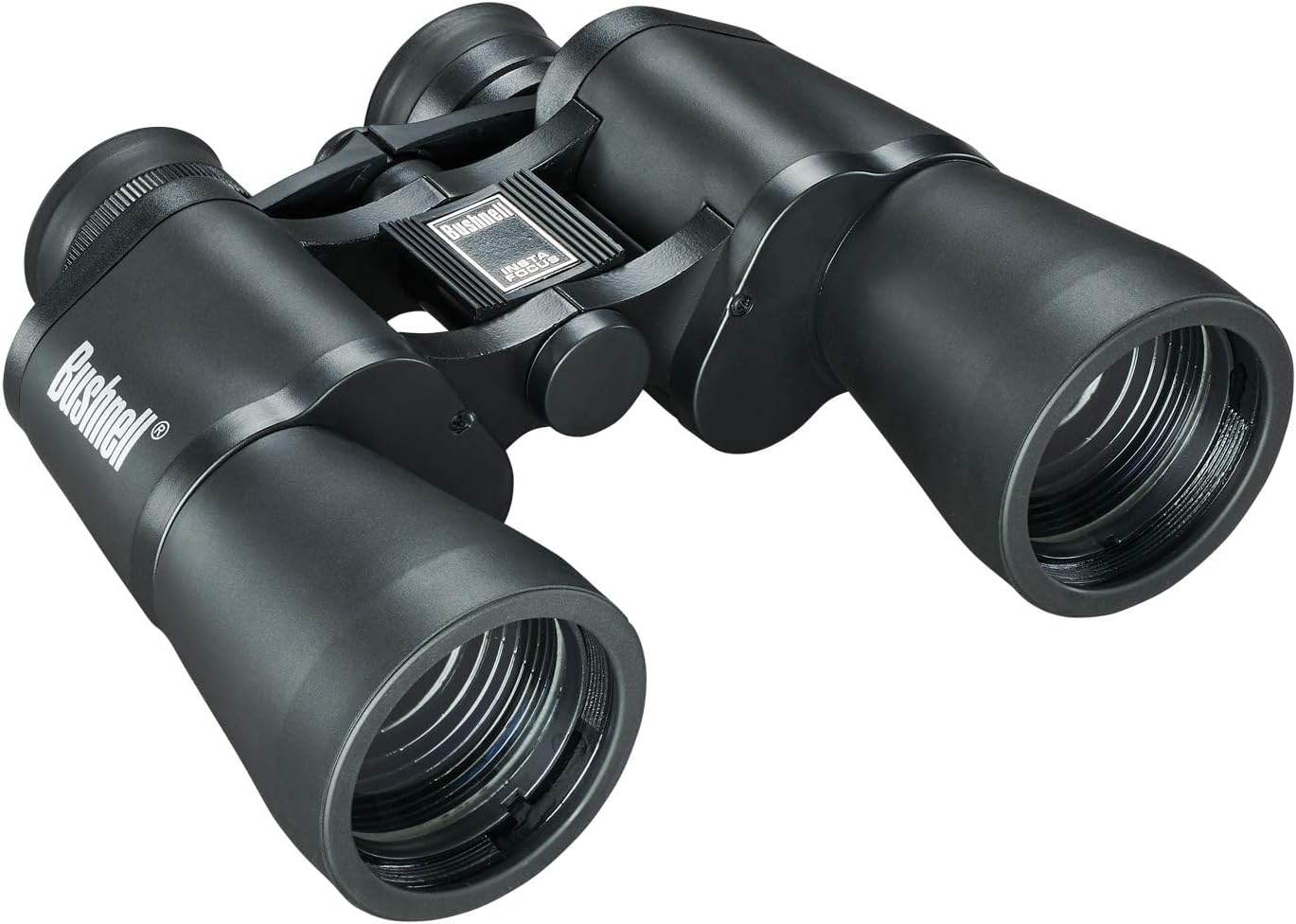

For budget-conscious buyers, occasional users, or as backup binoculars, the Bushnell Falcon represents outstanding value. They’re particularly well-suited for stadium sports, casual bird watching, or keeping in the car for unexpected viewing opportunities. Just don’t expect the durability or performance of models costing five times more.


HD optical system with premium glass
12x magnification for distant viewing
Tripod adaptable design
Fully multi-coated lenses
GlassPak harness included
Nitrogen purged and O-ring sealed
Check Price on AmazonThe Vortex Crossfire HD 12×50 strikes an impressive balance between magnification power and affordability. At $179, these binoculars bring HD optical quality to the 12×50 category without the premium price tag of flagship models. The HD glass system delivers noticeably better color fidelity and resolution than standard glass.
During extended testing sessions, the 12x magnification revealed details invisible through 10x models. Reading license plates at 400 yards, identifying bird species by subtle markings, and observing lunar craters all benefited from the extra power. The included GlassPak harness keeps the binoculars secure and accessible, eliminating neck strain during all-day use.
The tripod adaptability proves essential for maximizing the 12x magnification potential. While I could hand-hold them for quick observations, mounting them on a tripod transformed the viewing experience, eliminating shake and allowing relaxed, extended observation. The HD optics truly shine when stable, revealing detail that justifies the magnification increase.


For users who primarily observe from fixed positions or don’t mind carrying a tripod, the Crossfire HD 12×50 offers remarkable performance. The combination of HD optics, solid construction, and Vortex’s lifetime warranty makes these the smart choice for those wanting 12x magnification without breaking the bank. Just remember that binoculars under $1000 in the 12x category require more technique to use effectively than their 10x counterparts.
Understanding the technical differences between these magnifications helps predict real-world performance. Here’s how the physics plays out in practical terms:
| Specification | 10×50 Typical | 12×50 Typical | Practical Impact |
|---|---|---|---|
| Exit Pupil | 5mm | 4.17mm | 10×50 brighter in low light |
| Field of View | 330-340 ft | 270-285 ft | 10×50 easier for tracking |
| Image Shake | Manageable | 20% more | 12×50 needs steadier hands |
| Twilight Factor | 22.4 | 24.5 | 12×50 slightly better detail |
| Close Focus | 15-20 ft | 20-25 ft | 10×50 better for nearby subjects |
The twilight factor, calculated as the square root of magnification times objective diameter, suggests theoretical resolution in low light. While 12×50’s higher twilight factor (24.5 vs 22.4) indicates better detail resolution, this advantage only manifests when the image remains stable – hence the importance of tripod use with 12x models.
After extensive testing and user feedback analysis, I’ve developed this decision framework to help you choose:
Remember that these guidelines represent typical scenarios. Individual factors like hand steadiness, viewing experience, and specific use cases might shift the balance. Some users develop techniques to stabilize 12×50 binoculars effectively, while others never feel comfortable with anything beyond 8x magnification.
The right accessories can minimize the disadvantages of either magnification choice. For 12×50 users, a lightweight tripod or monopod transforms the viewing experience. I’ve found that even a simple trekking pole with a binocular adapter provides enough stability to make 12x magnification comfortable for extended viewing.
Image-stabilized binoculars offer another solution, though at significantly higher cost. These electronic or mechanical stabilization systems allow comfortable hand-holding at 12x and beyond, but prices start around $500 and climb rapidly. For most users, a quality conventional 10×50 paired with a spotting scope for when you need more magnification provides better value.
Harness systems benefit both magnifications but prove especially valuable for heavier models. A good harness distributes weight across your shoulders and keeps binoculars ready without the neck strain of traditional straps. This accessibility encourages more frequent use, maximizing your investment regardless of magnification choice.
While possible for short periods, most users find hand-holding 12×50 binoculars challenging for extended viewing. The 20% increase in image shake compared to 10×50 models causes fatigue and reduces image quality. With practice and proper bracing techniques, some users manage effectively, but a tripod or other support dramatically improves the 12×50 experience.
For most hunting situations, 10×50 provides the best balance. The wider field of view helps locate game, while the superior stability allows for extended glassing sessions. Western hunters in open country might prefer 12×50, especially when hunting from fixed positions with available support. Consider your typical hunting terrain and shooting distances when deciding.
Yes, 12×50 binoculars provide 20% more magnification, making distant objects appear larger and revealing finer details. However, this advantage only manifests when the image remains stable. Hand shake often negates the theoretical advantage, which is why tripod use becomes important for realizing the full potential of 12x magnification.
In low-light conditions, 10×50 binoculars typically appear brighter due to their larger exit pupil (5mm vs 4.17mm). Both gather the same amount of light through their 50mm objectives, but the 10×50 delivers more of that light to your eye. In bright daylight, this difference becomes negligible as your pupils contract.
For general bird watching, especially in wooded areas, 10×50 binoculars offer advantages in field of view and stability. For observing distant shorebirds or raptors, 12×50 models reveal more detail for identification. Many serious birders own both or choose 10×50 for versatility and add a spotting scope for distant observation.
12×50 binoculars work well for astronomy when properly supported. The higher magnification reveals more stars and detail in celestial objects. However, hand-holding becomes nearly impossible when looking up, making a tripod or reclining chair essential. Many amateur astronomers prefer 10×50 for casual stargazing due to easier handling.
The 15-20% wider field of view in 10×50 binoculars significantly impacts usability. It makes finding subjects easier, tracking movement more natural, and provides better situational awareness. For activities like sports viewing, wildlife observation, or marine use, this wider field often proves more valuable than extra magnification.
Beginners should start with 10×50 binoculars. The easier handling, more forgiving eye placement, and reduced shake create a better initial experience. Learning proper binocular technique with 10×50 models builds skills that transfer if you later decide you need more magnification.
After extensive testing and analyzing user experiences, I recommend 10×50 binoculars for most users. The combination of sufficient magnification, manageable stability, and wider field of view creates a more enjoyable and practical viewing experience. The 10×50 configuration has remained the most popular choice for good reason – it simply works better for the majority of real-world applications.
That said, 12×50 binoculars serve specific users well. If you primarily observe from fixed positions, regularly use support, or need maximum detail for distant subjects, the extra magnification justifies the trade-offs. The key is honest assessment of your needs and usage patterns.
For those still uncertain, I suggest starting with quality 10×50 binoculars like the Vortex Diamondback. If you find yourself consistently wishing for more magnification, you can add 12×50 models or a spotting scope later. This approach provides maximum versatility while avoiding the frustration of discovering your 12×50 binoculars spend more time in the closet than in the field because they’re too difficult to use comfortably.
Remember that optical quality matters more than magnification numbers. A premium 10×50 will outperform a mediocre 12×50 in every meaningful way. Focus on getting the best glass you can afford in whichever magnification suits your needs, and you’ll enjoy years of satisfying observation.


